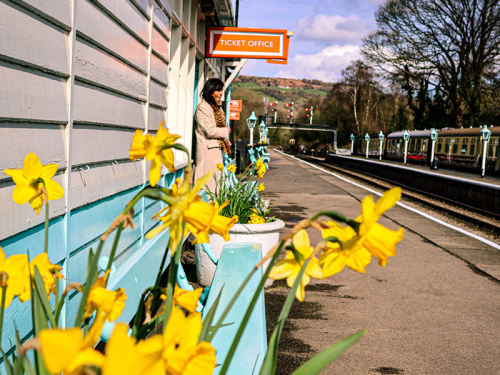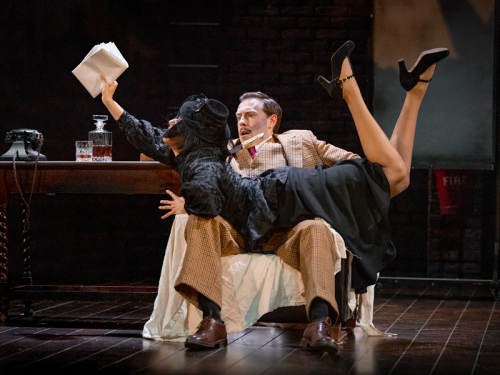See the Photos from Northern High Streets Now in the Historic England Archive
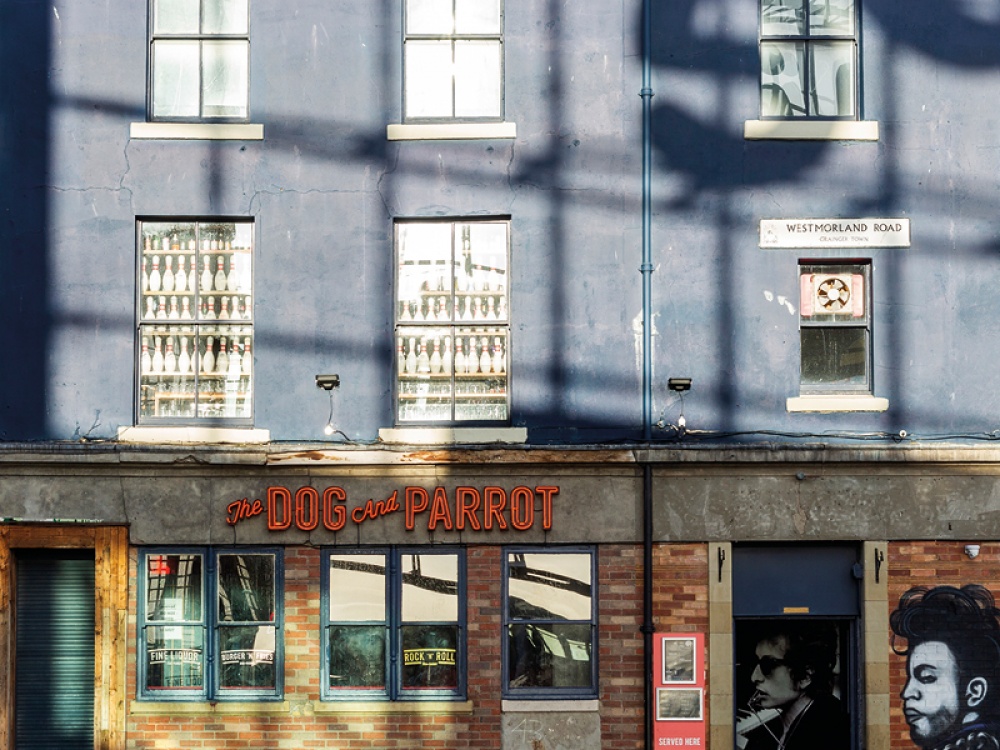
Following a national call-out, new photographs capturing the region's high streets have entered the Historic England Archive
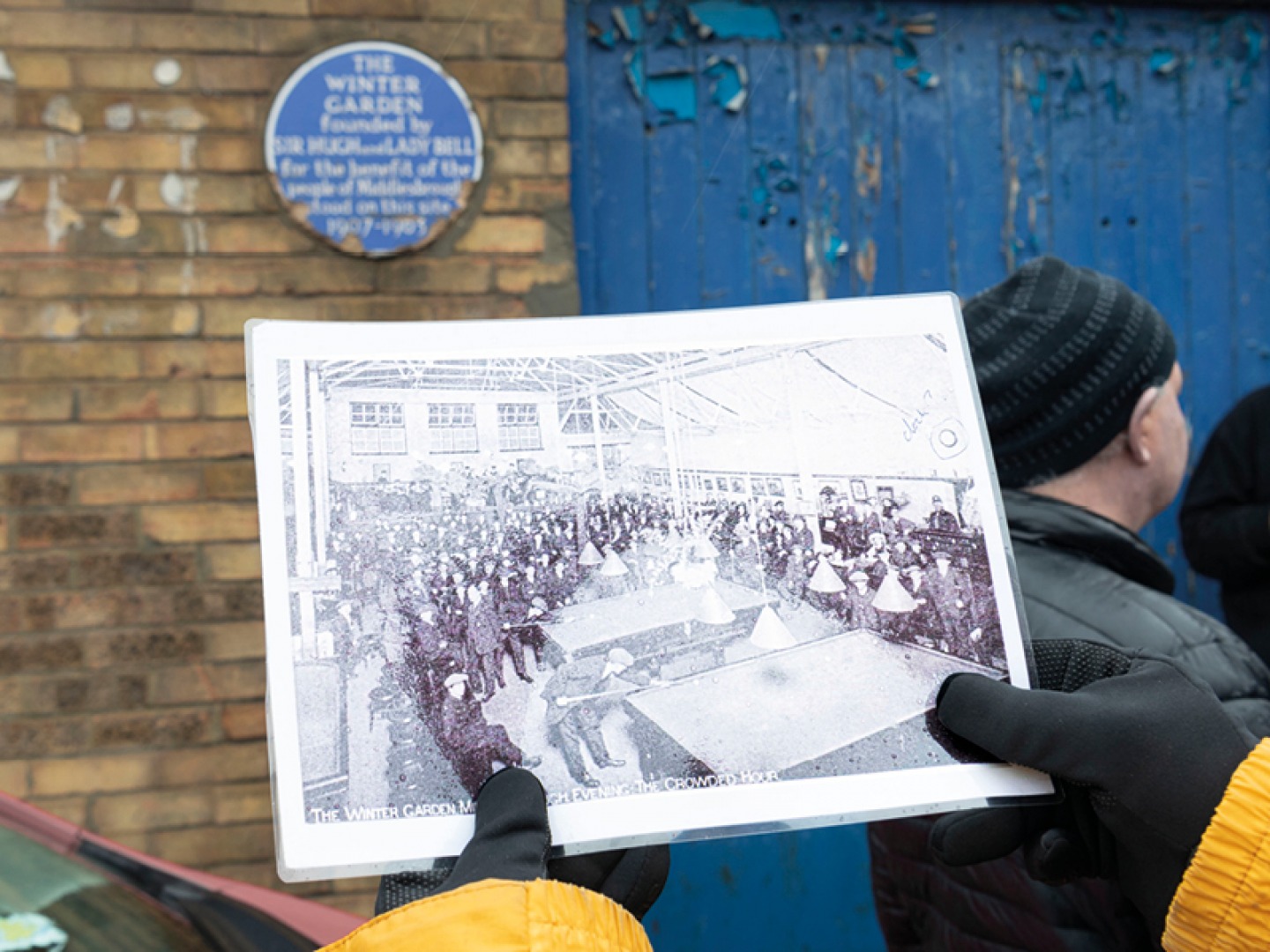
Middlesbrough Winter Garden Blue Plaque: a person standing in front of The Winter Garden, looking at a historic photograph of the building.
The Winter Garden, Dundas Street, Middlesbrough. Photographer: Rachel Deakin
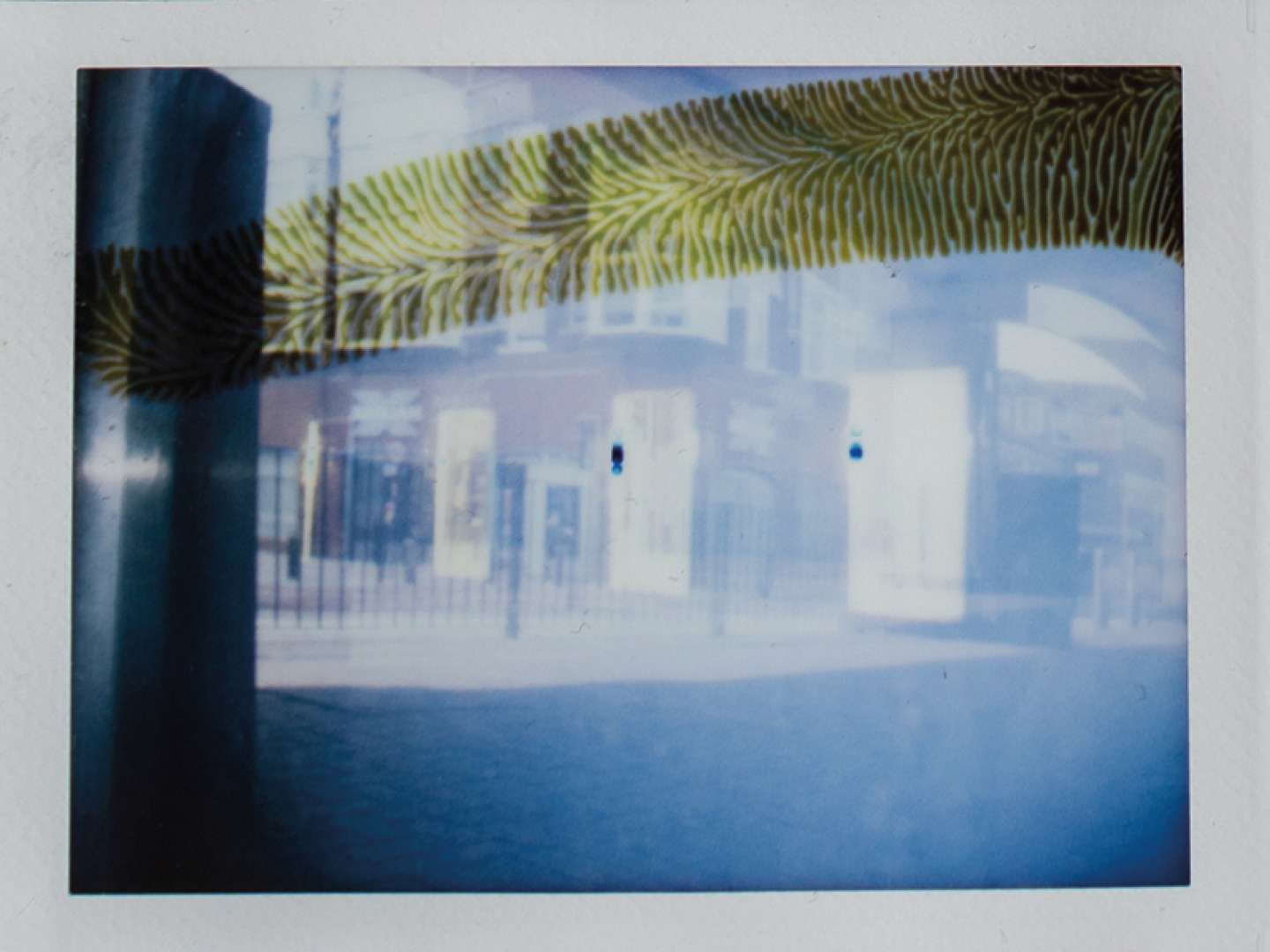
A66 and Over: an abstract view looking through the glass of a bus shelter beneath the A66, with the branch of Halifax on the corner of Linthorpe Road visible in the background.
A66, Middlesbrough. Photographer: Stuart Langley
Since September 2022, members of the public and keen photographers across the country have been responding to an Instagram call-out to submit their photographs of their local high street using the hashtag #PicturingHighStreets. This project has been a partnership between Historic England and Photoworks, aiming to build a contemporary picture of England’s high streets. It marks the final year of Historic England’s High Streets Cultural Programme and the £95 million High Streets Heritage Action Zones Programme, which has been revitalising more than 60 high streets across England, including Sunderland and Bishop Auckland.
‘We’ve been working with artists and arts organisations to co-create activities that communities can then get involved with in their own high streets,’ says cultural programme curator Tamsin Silvey. ‘The idea behind that is that high streets are the places where people meet and spend time and it’s really thinking about what people want to showcase and celebrate.’ Tamsin and the team have been working with partner organisations to deliver this project and also curated an exhibition which toured across the country from March to November last year. Starting off in London the images then appeared in various towns including Middlesbrough, reaching an audience of more than one million people.
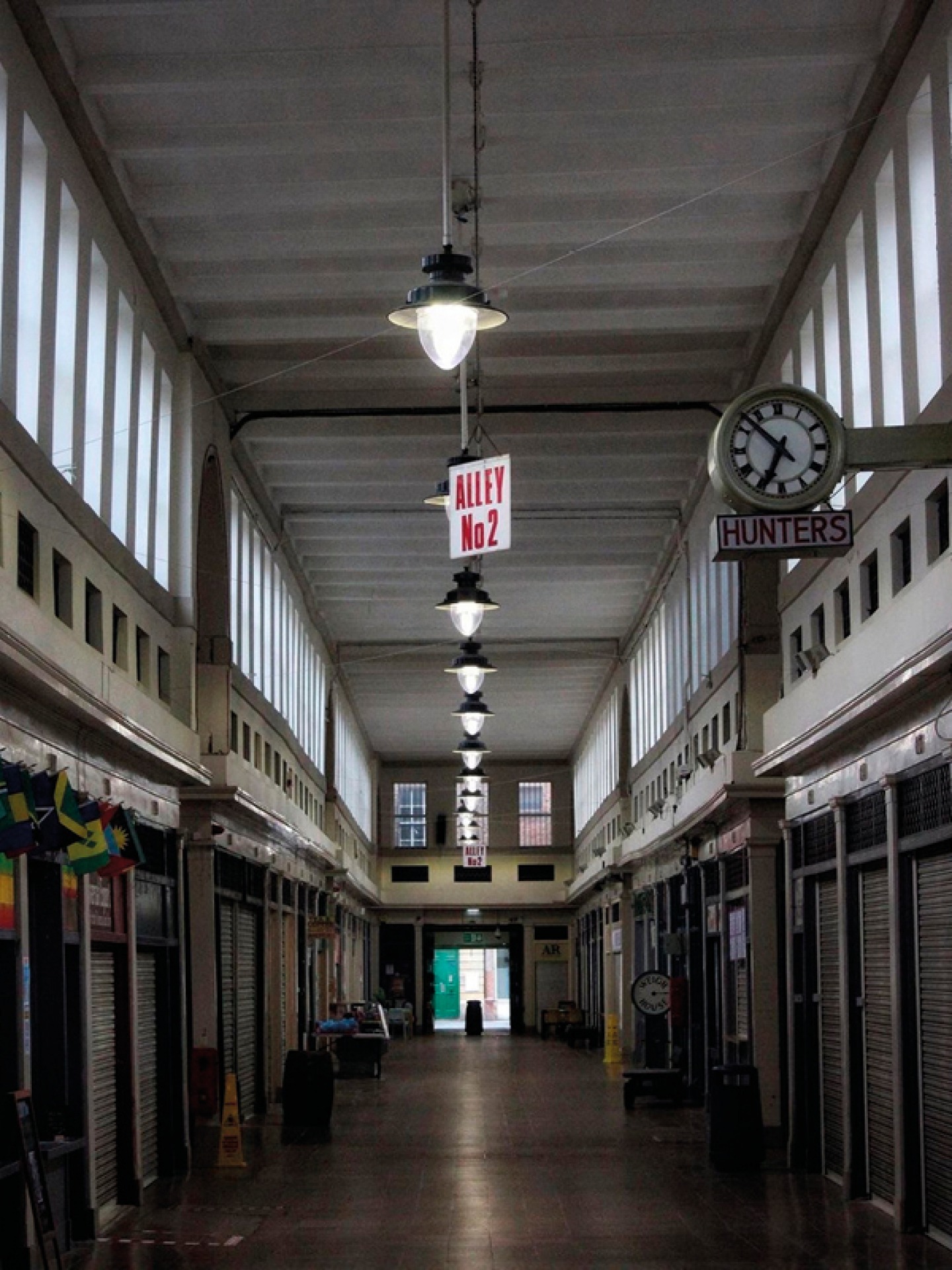
Calm Before the Shopping Storm: looking north east in Alley 2 of Grainger Market before opening.
Grainger Market, Grainger Street, Grainger Town, Newcastle. Photographer: Danial Kennedy
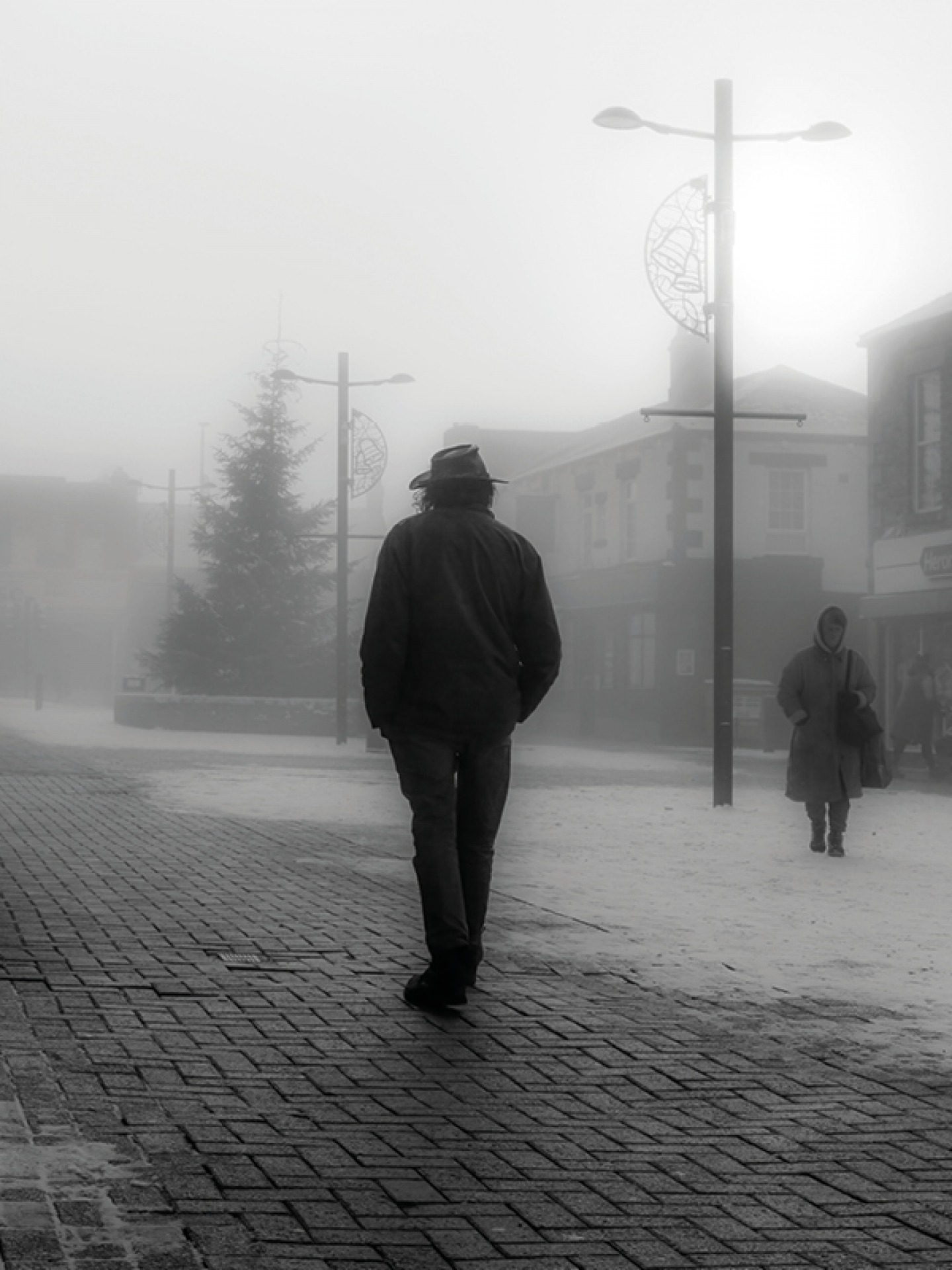
Foggy Christmas: a misty scene showing figures walking along the frosty street, with a Christmas tree silhouetted in the background.
Middle Street, Consett. Photographer: Sarah Loveland
The public were asked to share their photographs of high streets with fortnightly themed challenges, from high street hang outs to bright lights and dark nights. ‘For example we asked for photographs of markets, and another time we’d ask for something more thematic like Valentine’s Day,’ Tamsin explains. 'Across the year we had over 10,500 posts and from that we filtered them down to a representative selection of photographs from different call-outs from across the country.
‘What we were looking for is photographs that tell stories and that give us a sense of what people are proud of and what’s interesting and what’s unique. Some high streets are known for particular things and have heritage that’s linked to certain industries or periods in history, so we were really looking for photographs that would create a great collection that the public can see and will be preserved forevermore.’
Now 204 winning photographs have entered the Historic England Archive alongside 173 new images taken as part of local projects with resident artists on England’s high streets. The North East contributions include images of Newcastle’s Grainger Market, a barber shop in Durham, a misty morning in Consett and Middlesbrough’s Winter Garden. ‘In the North East, we’ve got some really lovely streetscapes that show the different seasons across the region,’ says Tamsin. ‘We’ve got a really beautiful picture of a gentleman walking with a Christmas tree in a very foggy background with snow on the ground in Consett. That’s almost a timeless image, which is great, and it’s also black and white which definitely helps with that timeless feel. There’s also a photograph of The Dog & Parrot in Newcastle which is a music venue and was a response to us asking for the public to send us images of places where they hang out and listen to music.
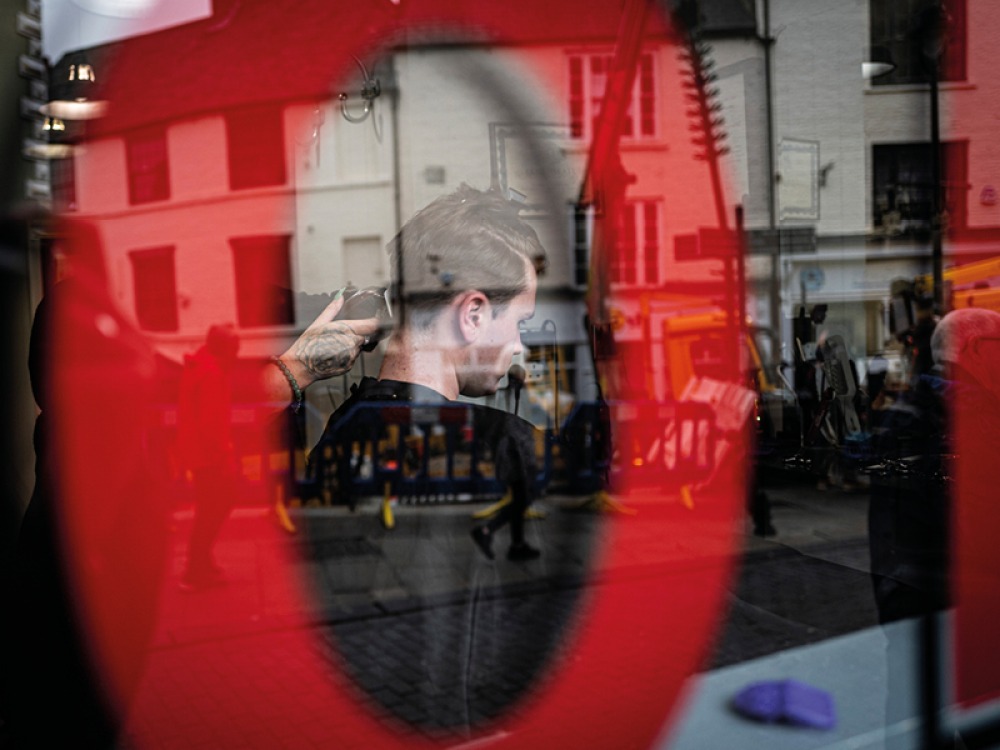
‘What’s also nice is that we have photographs that show the region’s hidden heritage. There’s a photograph of a site in Middlesbrough where the Winter Garden was with a plaque and a photograph in front, and I think what’s really interesting about that image is that it shows that we got people thinking about new places where there’s contemporary activity happening, but that there’s also a lot about memory, and nostalgia – looking back at what people can remember and what changes have taken place. We have a great indoor market scene from Grainger Market in Newcastle. It’s actually of an empty market which is really interesting and what’s so lovely is we asked people to look and then look again, and the photographer has really captured the architecture and the lines in a place where you don’t necessarily look up and appreciate these impressive buildings.’
Historic England Archive is a national collection – the nation’s archive for England’s historic buildings, archaeology and social history – and these images will act as a record of high streets for generations to come. ‘I think what’s really important about putting together a collection like this is that we’re creating contemporary portraits with a set of photographs that show what high streets are like today, but it’s also a bit of a time capsule so in the future we will be able to look back and see what people were wanting to say about their own high street,’ Tamsin adds. ‘The photographs aren’t commissioned by us. We asked the public to show us what they want us to see, so it’s about putting the public’s voice into the archive and preserving that. It’s a snapshot of social history and as a national institution that’s really important – making that selection and having these photographs from the North East means they will be there forevermore.’
Above: Saddler Street, Durham: a view through the window of Bronx Barbershop, showing a man getting his hair cut.
Bronx Barbershop, 67 Saddler Street, Durham. Photographer: Carl Joyce
While the decline of the country’s high streets has been hot topic for some years, this project shines a brighter light on how our region’s high streets are finding new ways to thrive. ‘High streets have been through a really difficult and challenging period and I think what we see in the photographs is a sense of hope and a sense of change,’ says Tamsin. ‘I think what we’re seeing is a real treasuring of local places from the inside and the outside that people have a connection with. There’s a real emotional connection which is great, but I also think high streets are becoming places where people are doing different things – people are going there to spend time as well as money.
‘There’s lots of evidence of people coming together to do more creative things and to take part in cultural activities and parades, for example. High streets are a place where communities come together and we’ve certainly seen (through the High Streets Heritage Action Zones Programme) that more people are starting to set up community cafés and meeting spaces and I feel like they are really thinking about high streets in creative ways. There is a need for high streets to be preserved in terms of how we come together and connect with each other.’






